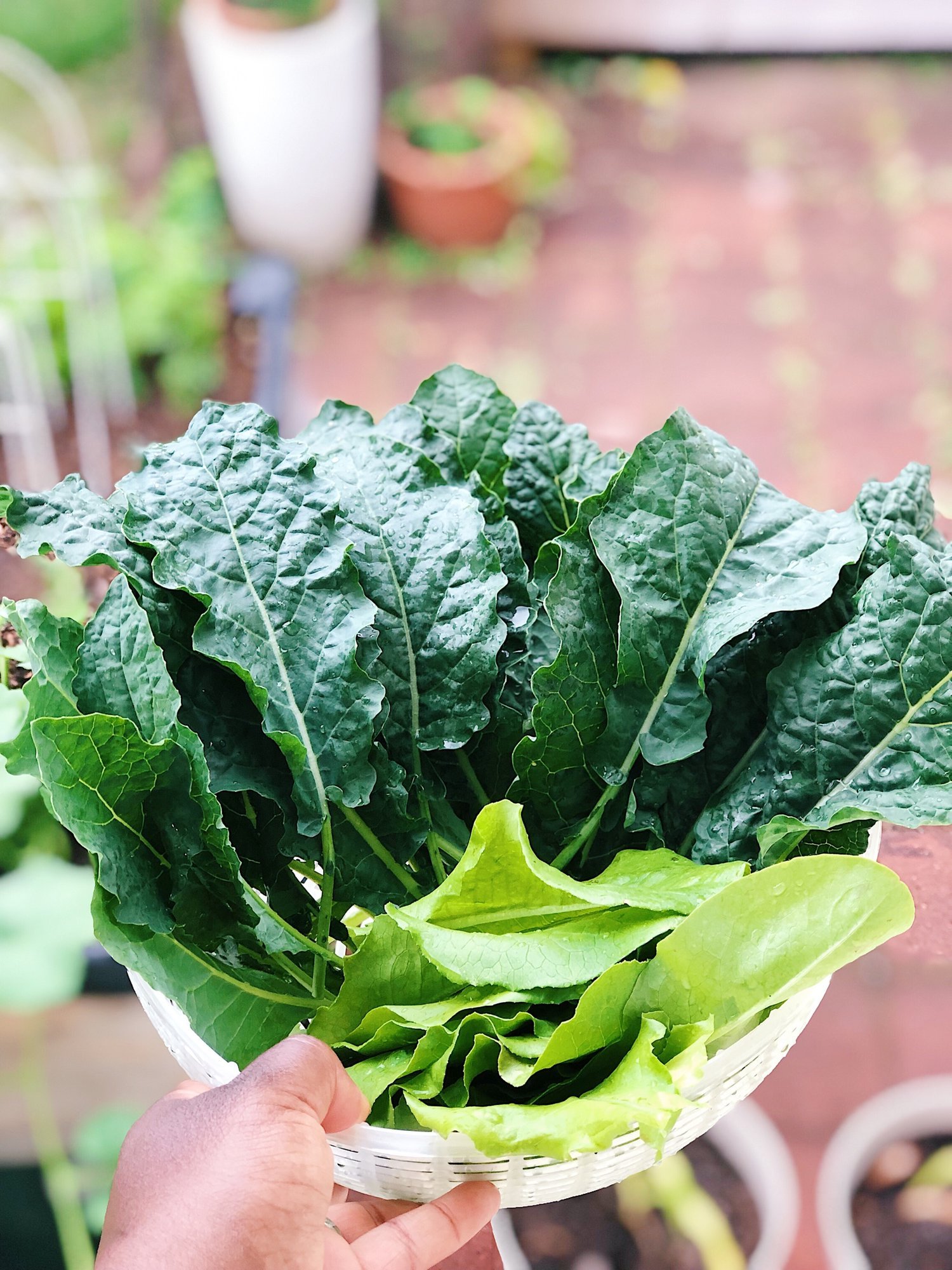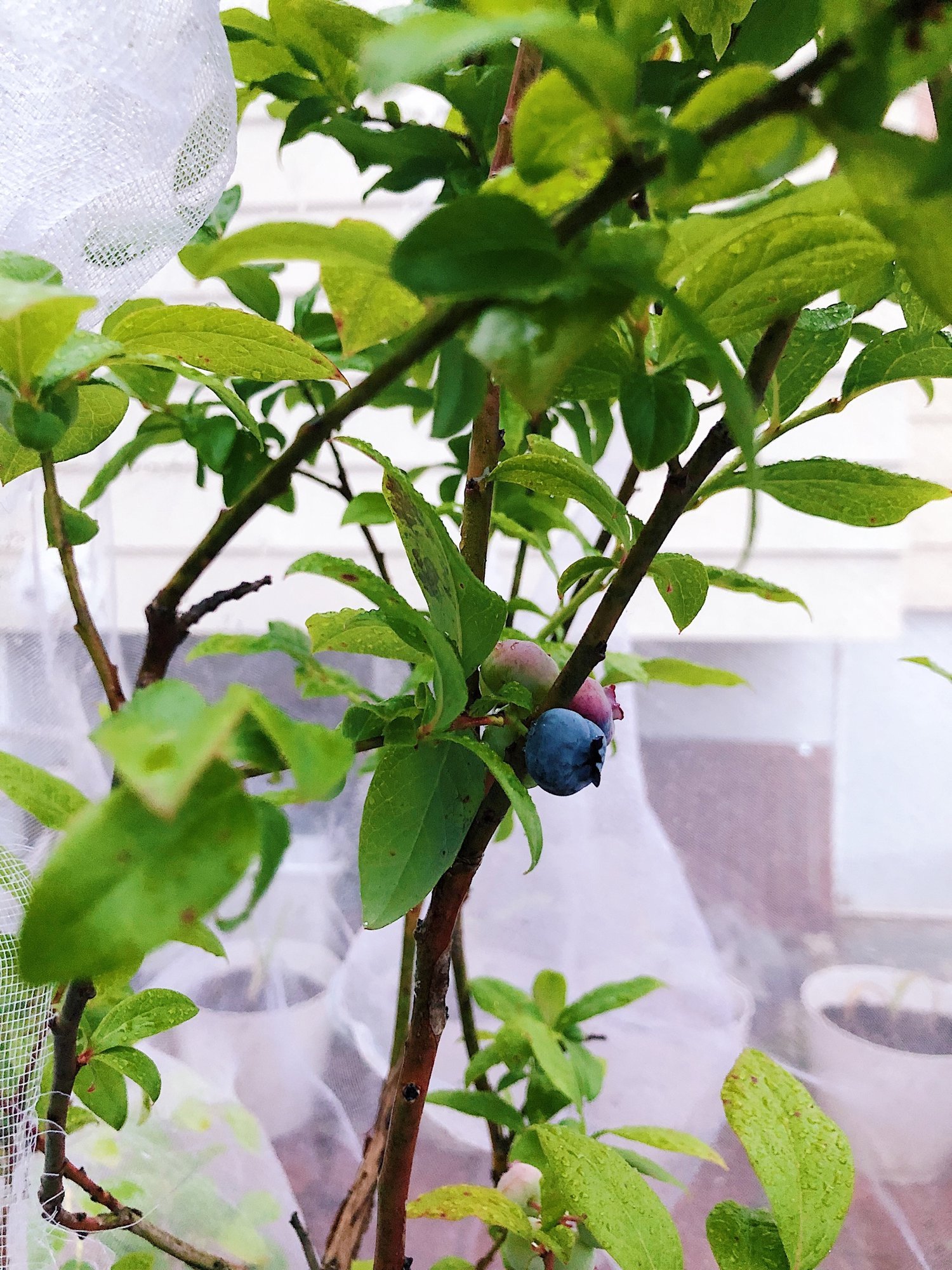A Salad for the Soul
Summer is here and that means a lot of garden posts are showing up in my social media posts. In truth, gardening has gotten me through a lot this year. Whenever I’ve been emotionally unsound, when I’ve needed stress relief, when I’ve needed escape, I’ve spent time in my garden. Sweating, shoveling, sowing, it’s all been a life-saving drug for me, and it wouldn’t be happening if not for salad.
Salad was my gateway drug. In 2009 I got my first place in Silver Spring and decided to start a vegetable garden on my balcony. I did no research, had no understanding of what it would take to grow anything edible, but I figured that it I was going to grow anything, it should at least save me money. My goal was to grow things I didn’t want to buy at the store, which at the time was a lot of vegetables. I figured that if I could grow lettuce, I could have “free” salad all summer.
While that didn’t turn out to be the case exactly (sometimes a small amount of research can help), I did get hooked on gardening.
My 2009 balcony garden. Very green, not extremely edible. Seeds were started too close together and I only used soil from from the Target dollar bins.
I’ve grown various things every year aside from two, and in those I was growing a baby and getting acclimated to having grown one. Each year we experiment with new plants, and different techniques. We grow household staples, like favorites buttercrunch lettuce, black cherry tomatoes, strawberries and peppers. This year we’re attempting butternut squash for the first time. There are things I just haven’t been able to get right, like carrots. Third time’s a charm right? And things we’ve abandoned to only wish we had space for again, like potatoes.
2019 kale and lettuce harvest; first ripe blueberry of 2019
Each year we add another cedar box depending on what plants we’re invested in for the long term. We don’t grow in the ground because I like to control the soil content and I think that our yard has mysterious matter lurking. Because of this, crops earn their place before a dedicated box of proper size and shape is built.
I’d love to say we have an experimental box, but that may be a few years down the line. Cedar is expensive and we have quite a few containers that get used when we run out of room in the existing boxes. This year we added a box for the blueberry bushes, but to cut costs we made it smaller than one they should have been in. When we can build a larger box, we’ll transplant them and put something else there. Seeing what works is part of what I love about the process. And blueberries, I love blueberries. If we end up having enough that are ripe at one time, they’ll go in my salad too.
Since it’s still early in the summer, we can only harvest greens, peas and herbs. Our first crop of carrots should be ready next week, fingers crossed. Tomatoes will be coming along soon, then the peppers, and maybe if the rain lets up we’ll get some corn. Overall the harvest is just slow enough for us to appreciate what we’re growing, and that’s worthwhile.
Salad has prompted me to create other things too, like toppings. So far the baked rosemary croutons are my favorite. By the end of summer my salads will be mostly homegrown with homemade elements, and only the meat and cheese will have to be purchased.
Growing my own food gives me a sense of tangible accomplishment in a way that not many other things do. It’s highly personal and takes great care, but the process is plentiful to my soul, and the salads are delicious.
Though “decorator”, "interior designer", and "interior architect" can be a matter of semantics, the terms don’t have any effect on who you can and can not hire. But as a client, you can use the title as a first step to narrow down who might be a good fit for your project.
An interior decorator typically hasn’t been to school for design, and mainly shops at retail stores (or if they’ve been in the biz long enough, they have a trade license). They might have done some projects where they needed a contractor to build something, but they weren’t submitting anything for a permit. They’re all about aesthetics, the art side of design. Sometimes this means their choices don’t make functional sense, but if it fits the look, that’s what’s important. I don’t mean to downplay their talent by any means. Actually, I'm in awe of what some decorators can do. But I am speaking to technical capability.
An interior designer has been to school for interior design. They should have a piece of paper of some kind stating so, and most likely they have the student loan debt to go with it (if not, praise be). Interior designers are concerned with the science of design. They can create floor plans, furniture plans, electrical plans, reflected ceiling plans, finish plans, elevations, and detail drawings. Some can sign their own drawings for permits. They know how interior architecture can be manipulated, all of the decorating terms, the turning radius is in an ADA bathroom, and what the clearance is for a wheelchair on a straight path. As someone outside of the field you may not be familiar with these things; but what you should know is that an interior designer provides full service design.
An interior architect has trained in the same coursework as an interior designer, but their education may have had a more architectural lean to it. In the field they may be more heavily focused on the form of the space. If you were to take all of the tasks from interior design that involve drawings, that would be interior architecture. Interior designers and interior architects are two sides of the holistic design coin, which is why there’s such a dull edge between the terms. Depending on the project, an interior architect may never work with upholstery or pick out a window treatment, but they will make sure that everything intended is going to fit within a space in a way that best serves the users.
So why am I making the change to say I’m an interior architect? Because I am an interior designer whose work is largely centered on interior architecture, and I find myself in a space of continual education based partially in the title I have chosen. I practice human-centered design and I don’t do a lot of art and accessory selection since these are entirely aesthetic. Instead, I create spaces whose form and function are holistically compatible with their users. Within those I specify surface materials, furniture, lighting, and more including the right paint color for a space as it relates to aesthetic values of my client and their needs. I’m choosing architecture because of what that means to the general public, and I’m choosing it because it’s what I actually do.
If you want to geek out, here’s one of my favorite pieces about interior design.





